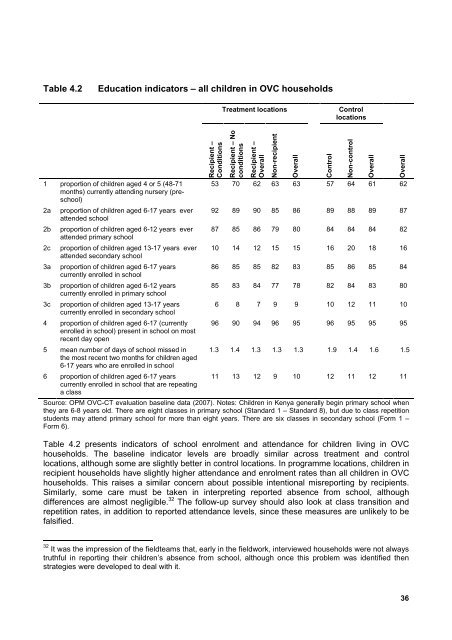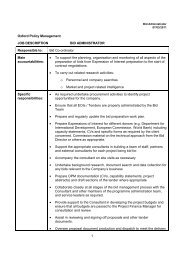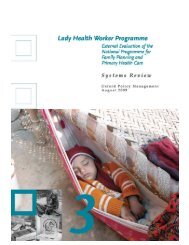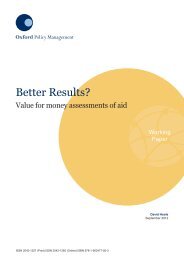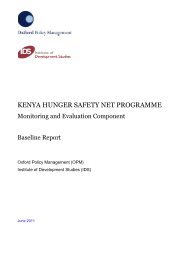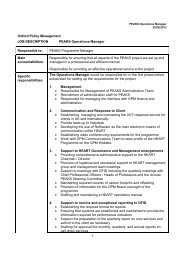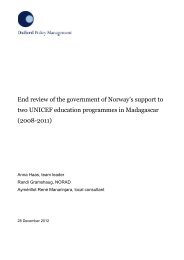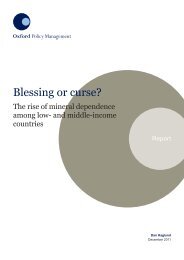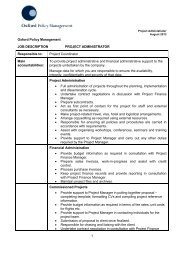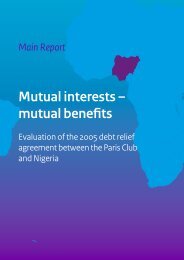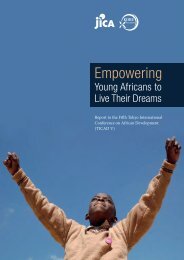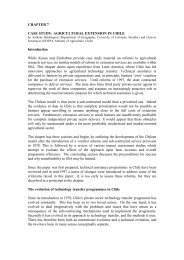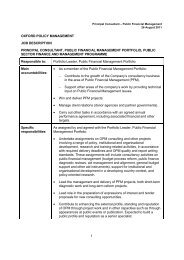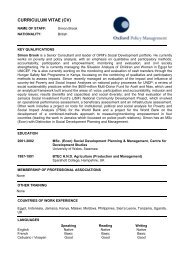Kenya OVC-CT Programme Operational and Impact Evaluation
Kenya OVC-CT Programme Operational and Impact Evaluation
Kenya OVC-CT Programme Operational and Impact Evaluation
Create successful ePaper yourself
Turn your PDF publications into a flip-book with our unique Google optimized e-Paper software.
Table 4.2Education indicators – all children in <strong>OVC</strong> householdsTreatment locationsControllocations1 proportion of children aged 4 or 5 (48-71months) currently attending nursery (preschool)2a2b2c3a3b3cproportion of children aged 6-17 years everattended schoolproportion of children aged 6-12 years everattended primary schoolproportion of children aged 13-17 years everattended secondary schoolproportion of children aged 6-17 yearscurrently enrolled in schoolproportion of children aged 6-12 yearscurrently enrolled in primary schoolproportion of children aged 13-17 yearscurrently enrolled in secondary school4 proportion of children aged 6-17 (currentlyenrolled in school) present in school on mostrecent day open5 mean number of days of school missed inthe most recent two months for children aged6-17 years who are enrolled in school6 proportion of children aged 6-17 yearscurrently enrolled in school that are repeatinga classRecipient –ConditionsRecipient – NoconditionsRecipient –OverallNon-recipientOverall53 70 62 63 63 57 64 61 6292 89 90 85 86 89 88 89 8787 85 86 79 80 84 84 84 8210 14 12 15 15 16 20 18 1686 85 85 82 83 85 86 85 8485 83 84 77 78 82 84 83 806 8 7 9 9 10 12 11 1096 90 94 96 95 96 95 95 951.3 1.4 1.3 1.3 1.3 1.9 1.4 1.6 1.511 13 12 9 10 12 11 12 11Source: OPM <strong>OVC</strong>-<strong>CT</strong> evaluation baseline data (2007). Notes: Children in <strong>Kenya</strong> generally begin primary school whenthey are 6-8 years old. There are eight classes in primary school (St<strong>and</strong>ard 1 – St<strong>and</strong>ard 8), but due to class repetitionstudents may attend primary school for more than eight years. There are six classes in secondary school (Form 1 –Form 6).ControlNon-controlOverallOverallTable 4.2 presents indicators of school enrolment <strong>and</strong> attendance for children living in <strong>OVC</strong>households. The baseline indicator levels are broadly similar across treatment <strong>and</strong> controllocations, although some are slightly better in control locations. In programme locations, children inrecipient households have slightly higher attendance <strong>and</strong> enrolment rates than all children in <strong>OVC</strong>households. This raises a similar concern about possible intentional misreporting by recipients.Similarly, some care must be taken in interpreting reported absence from school, althoughdifferences are almost negligible. 32 The follow-up survey should also look at class transition <strong>and</strong>repetition rates, in addition to reported attendance levels, since these measures are unlikely to befalsified.32 It was the impression of the fieldteams that, early in the fieldwork, interviewed households were not alwaystruthful in reporting their children’s absence from school, although once this problem was identified thenstrategies were developed to deal with it.36


